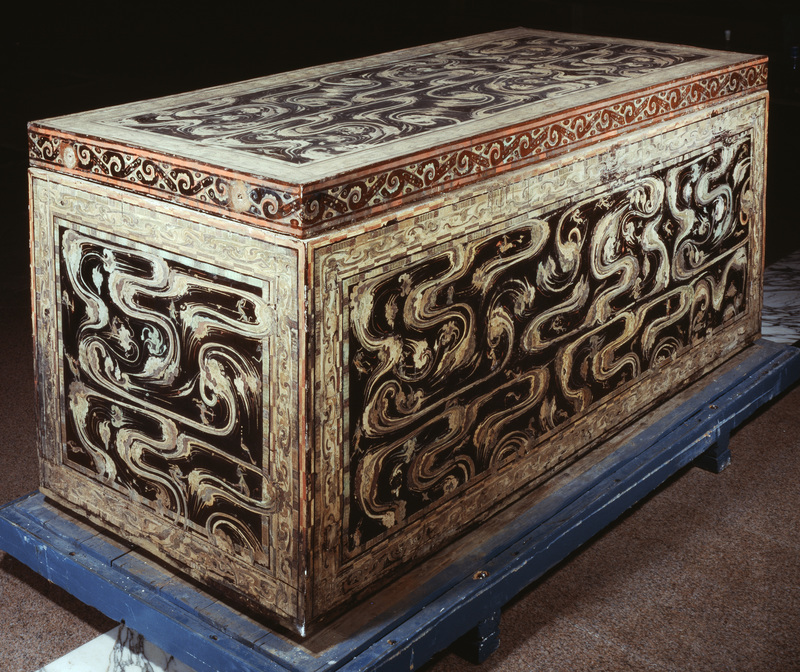Black Lacquer Coffin

Western Han Dynasty (206 BC-25 AD)
Unearthed from Mawangdui Han Tomb No.1, Changsha, Hunan Province in 1972
Length: 2.56m
Width: 1.18m
Height: 1.14m
This coffin is from the second layer of the set of coffins in four layers from Tomb No.1. The coffin is coated inside and out with vermilion lacquer. Over one hundred designs of running horses, human beings and auspicious patterns such as tigers, pheasants, dear, cranes, immortals are painted in bright colors against the vermilion background of the outer surface.
The set of coffins the black coffin belongs to is crowned as a national treasure. According to historical book, an emperor is privileged to be buried with five coffins and two outer coffins, a feudal lord, four coffins and one outer coffin or three coffins and two out coffins, a senior official, two coffins and one outer coffin... This treasure proves the fact that Xin Zhui, the tomb occupant of Mawangdui Tomb No.1, enjoyed the privilege of a feudal lord and at the same time, provides physical evidences for the funeral system of Han Dynasty.
The coffin vividly reflects the artistic style and adept painting skills of artists of the Western Han Dynasty and is a precious example for study. Mystical and grotesque themes of myth and legend and the technique of embossing in the application of lacquer show the influence of the Chu-state culture.
深入探索
On Pattern of “Flowing Clouds with Divine Animals”
Influenced by Chu culture, People of the Han Dynasty were fond of gods and immortals. By adding into these over one hundred of pattern animals, divine birds, gods and immortals, a new pattern called “flowing clouds with divine animals” was created to form a pattern with the connotations of auspiciousness and exorcising demons, which became the main pattern in the early Han Dynasty. These beautiful and mystical patterns, flowing like waters and drifting like clouds, reflected the romantic wonderland in people’s mind.
The pattern of flowing clouds is a lacquer decorative theme that came into being during the Warring States Period and was further developed in the Han Dynasty. People of the Han Dynasty were fond of gods and immortals. By adding into these pattern animals, divine birds, gods and immortals, a new pattern called “flowing clouds with divine animals” was created to form a pattern with the connotations of auspiciousness and exorcising demons, which became the main pattern in the early Han Dynasty. In fact, lacquer paintings with the pattern of flowing clouds and divine animals reflected the wonderland in people’s mind, so it was depicted as being beautiful and mystical. Each of these clouds are like flowing water, the more than one hundred gods and immortals are vivid and lifelike, and the groups of grotesque animals are lively – all dancing in the flowing clouds. Is what it demonstrates allowing you to directly get in touch with the spiritual history of the Han civilization? The profound cultural connotations are all condensed and accumulated here, passing on and influencing people’s thoughts and mood.



